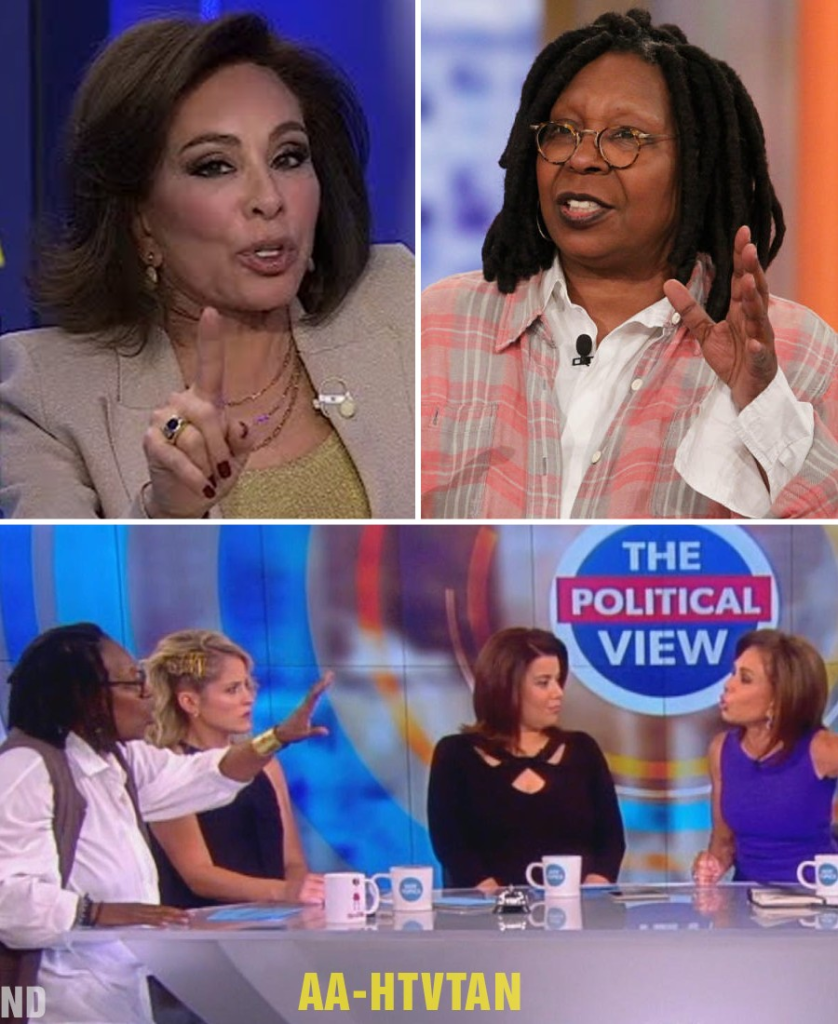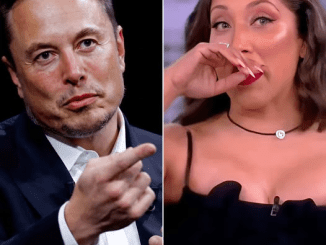
One of the most talked-about moments in television history took place in 2018 when Judge Jeanine Pirro, known for her outspoken conservative views, appeared on The View to promote her book Liars, Leakers, and Liberals. What was supposed to be a standard interview quickly escalated into a fiery confrontation, setting the stage for one of the most controversial moments in daytime television history.
The Spark that Set it Off
The tension began when Pirro made a comment about “Trump Derangement Syndrome,” a term used to describe the extreme opposition and irrational behavior of some of President Donald Trump’s critics. Pirro suggested that those who opposed Trump had lost their ability to think clearly, a statement that immediately set off The View co-host Whoopi Goldberg. Goldberg, visibly upset, interrupted Pirro and sharply responded, “You can’t say that about me!”
The Tensions Escalate

As the exchange between Pirro and Goldberg grew more heated, Pirro stood her ground and continued to defend her position. Goldberg, refusing to back down, demanded that Pirro stop making such accusations, labeling them offensive. The tension in the studio reached a boiling point when Goldberg, growing increasingly frustrated, told Pirro to “get the F out” of the studio.
Pirro, though clearly caught off guard, maintained her composure throughout the escalating situation. The moment was one of the most charged confrontations ever witnessed on daytime television. As Goldberg’s emotions ran high, Pirro remained steadfast in her stance, not willing to back down or apologize for her beliefs.
The Aftermath and Fallout

After the cameras stopped rolling, the tension didn’t end. Pirro claimed that she was “shouted at” and asked to leave the building by the show’s producers. The incident quickly went viral, sparking discussions across the political spectrum. Pirro later appeared on Hannity to discuss the confrontation, where she argued that the incident wasn’t just about her but rather about the growing inability to engage in healthy political debates.
In her appearance on Hannity, Pirro emphasized that the real issue was the lack of respect for opposing viewpoints in America today. She argued that such hostile encounters only serve to deepen the political divide in the country. “It’s not about me,” Pirro said. “It’s about the fact that we can’t have a healthy debate anymore.”
Why the Incident Still Matters Today
While the incident occurred several years ago, it remains a pivotal example of how political tensions have bled into everyday conversations—even on shows like The View, which typically prides itself on hosting a variety of viewpoints. The confrontation highlighted a larger issue: whether platforms like The View are contributing to the political divide or helping to heal it.
Some defended Pirro’s right to express her views, arguing that she should be allowed to speak freely without being silenced. Others sided with Goldberg, seeing her as a defender of opposing viewpoints. The debate continues to spark conversations about what’s acceptable in public political discourse and how far media personalities can go in their exchanges.
The Bigger Picture
The Pirro-Goldberg showdown underscores a significant issue in the modern media landscape: the challenge of maintaining civil discourse when discussing politically charged topics. As the nation becomes more divided, the lines between news, entertainment, and political commentary continue to blur. This incident serves as a stark reminder of how media platforms can often amplify division rather than foster constructive conversation.
The confrontation between Judge Jeanine Pirro and Whoopi Goldberg also brought into focus the challenges of navigating political differences in a time of heightened polarization. In an era where everything from late-night shows to cable news can be deeply partisan, this moment became a symbol of how difficult it has become to engage in genuine debates without resorting to insults or emotional outbursts.
Conclusion
Judge Jeanine Pirro’s explosive exchange on The View was not just an isolated argument—it was a reflection of the current political climate, one characterized by sharp divisions, vitriolic rhetoric, and a breakdown in civil discourse. This incident continues to be a defining moment in how political differences are handled in the public arena, as it highlighted the growing chasm between partisan ideologies. What started as a standard interview quickly turned into a moment that would go on to define the rifts in American politics and media, raising important questions about the future of dialogue in a divided nation.


